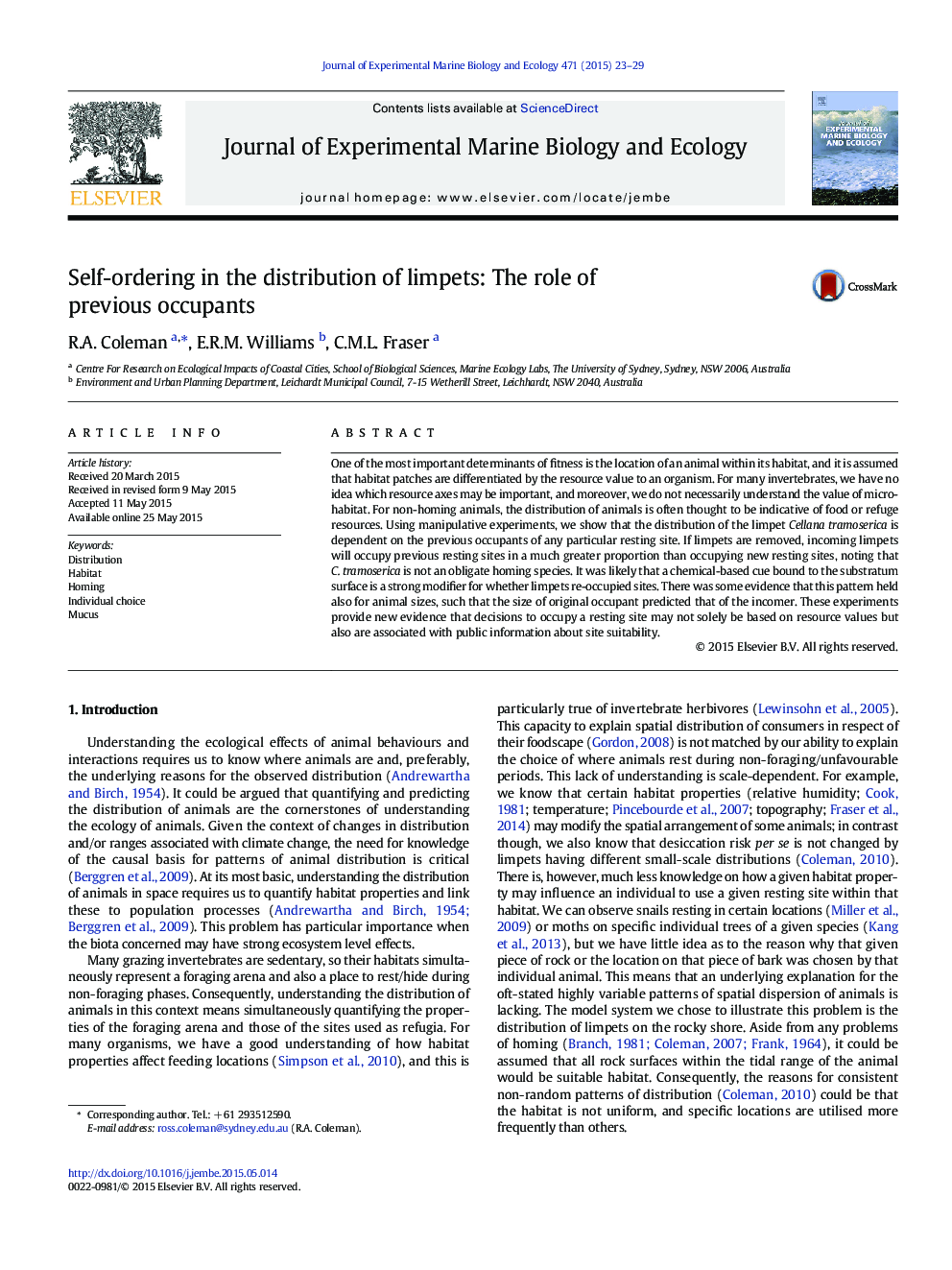| Article ID | Journal | Published Year | Pages | File Type |
|---|---|---|---|---|
| 6303846 | Journal of Experimental Marine Biology and Ecology | 2015 | 7 Pages |
â¢We can use paint stripper to modify mollusc-derived mucus cues on rocky substrata.â¢Tenacity measures indicate on apparent ill-health to limpets from paint stripper.â¢Limpet distribution is strongly affected by the previous distribution of conspecifics.â¢Homing is not the only story to explain where limpets are on rocky shores.
One of the most important determinants of fitness is the location of an animal within its habitat, and it is assumed that habitat patches are differentiated by the resource value to an organism. For many invertebrates, we have no idea which resource axes may be important, and moreover, we do not necessarily understand the value of microhabitat. For non-homing animals, the distribution of animals is often thought to be indicative of food or refuge resources. Using manipulative experiments, we show that the distribution of the limpet Cellana tramoserica is dependent on the previous occupants of any particular resting site. If limpets are removed, incoming limpets will occupy previous resting sites in a much greater proportion than occupying new resting sites, noting that C. tramoserica is not an obligate homing species. It was likely that a chemical-based cue bound to the substratum surface is a strong modifier for whether limpets re-occupied sites. There was some evidence that this pattern held also for animal sizes, such that the size of original occupant predicted that of the incomer. These experiments provide new evidence that decisions to occupy a resting site may not solely be based on resource values but also are associated with public information about site suitability.
